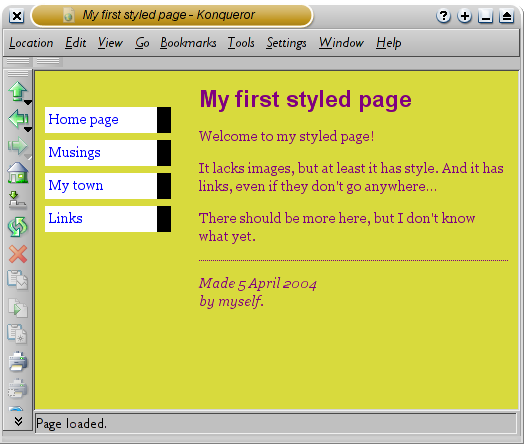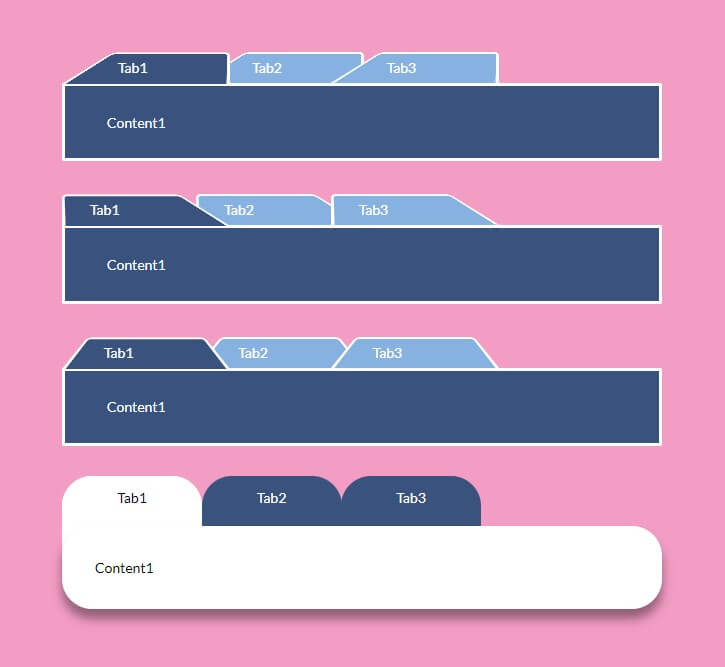

THIS IS MY BANNER TEXT HOME INFO CONTACT HUBPAGES This Is My Paragraph Header This is where I am going to put useful and informative text about my website. Last, we need to link our HTML file to our CSS file inside the tags. If the tag is a unique section of your website, then we will assign it an id, but for tags that represent a repeating element of the website that will have similar styling, like the body text, we will assign a class instead. For each of our main tags we will want to assign either an id or a class inside its opening tag. Before we can start writing in our new CSS file, we need to add one more thing to our index.html file. Using your text editor create another file and name it "style.css". Now that we have our website, let's add some styling with CSS. Now, let's open our website and see what we have so far. While it is possible to add text to your website simply by typing in between the tags, it is much cleaner and easier to style and organize your website if you place your text in paragraph or header tags or like in the case of our copyright disclaimer place it in its own.
#Html css sample page code
The tags are used to mark a paragraph of text, and the new at the bottom of the code is to separate our disclaimer from the rest of the text on the page. We used an in this case to emphasize the paragraph header while still keeping it smaller than the banner text. Here we can see another example of a header tag. This is where I can place a copyright logo like this © This is where I am can place even more information about my website. Now, let's add some text the body of our website. In this example, the first three links would direct you to different sections of your future website, and the fourth link would take you to the Hubpages website. The text in between the tags is what is displayed as the link text, while the text inside the quotation marks after the href is the link destination. Inside of the tags are tags which are used to create links to other webpages or other pages of your website. The tags stands for unordered list with the tags each being a list item on the unordered list. THIS IS MY BANNER TEXT HOME INFO CONTACT HUBPAGES Īgain, we will use tags to separate the navbar into its own section.

Now, let's add a navigation bar, or navbar for short.

Headers are most commonly used to emphasize banner text and paragraph titles. The biggest differences between the headers is the text size. There are six different headers (h1, h2, h3, h4, h5, and h6) that can be used. The tags are used for creating headers on your website. In this case, we are using div tags to separate the banner from the rest of the website. tags are used to separate a section of your website from the rest of the website. Between the tags on lines 6 and 8 is where you will put the content of your website. Between the tags on lines 3 and 5 is where you will put code for displaying your website name and logo in your web browser's tab. The tag on the 1st line tells internet browsers that this is an html file, and the tags on the 2nd and 9th lines tell the browsers that everything between these two tags is HTML typed in English. This text is common to almost every HTML file. Now, copy and paste the code below into your index.html file. For anyone who has not already found a text editor that they like, I would highly recommend using Brackets for writing HTML and CSS. Go ahead and open your text editor and create a new named "index.html".

So let's get started by creating a simple HTML file and some of the more common elements that are found on a webpage. In order to use CSS, we will need to have some content on our website first.


 0 kommentar(er)
0 kommentar(er)
